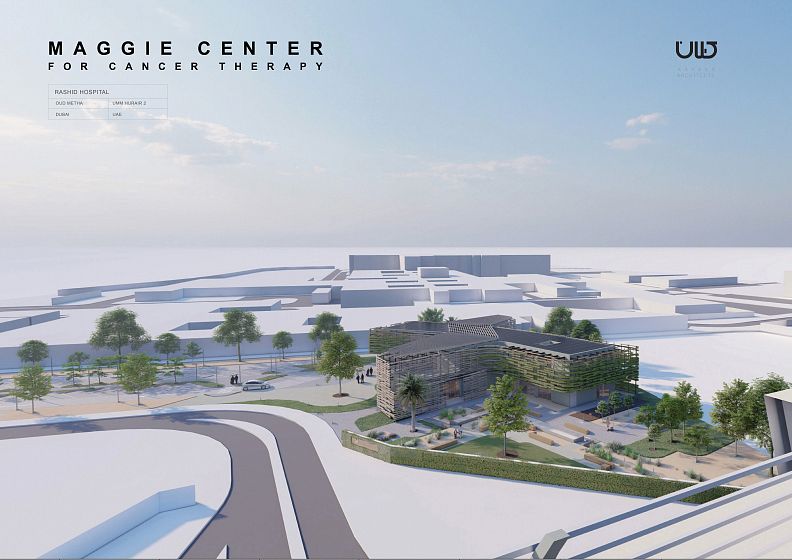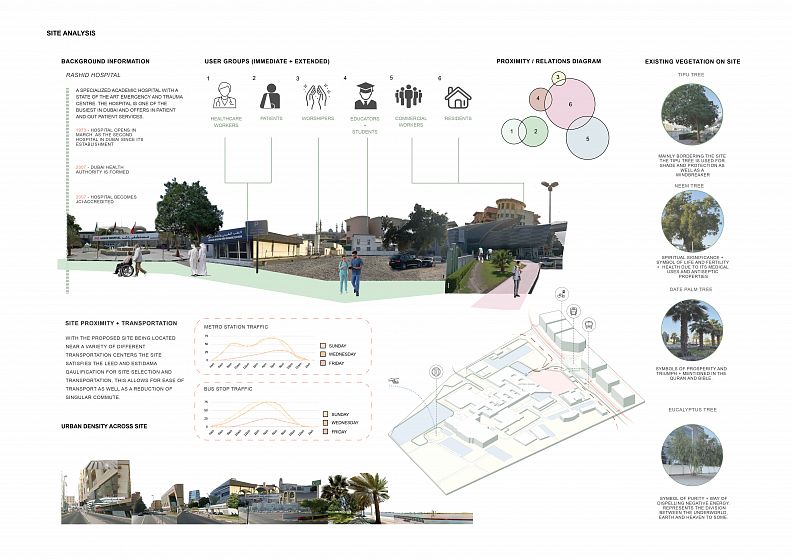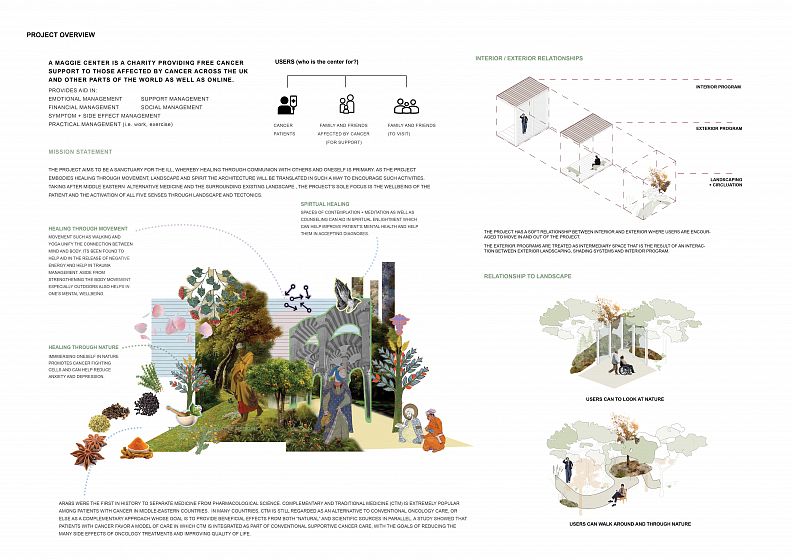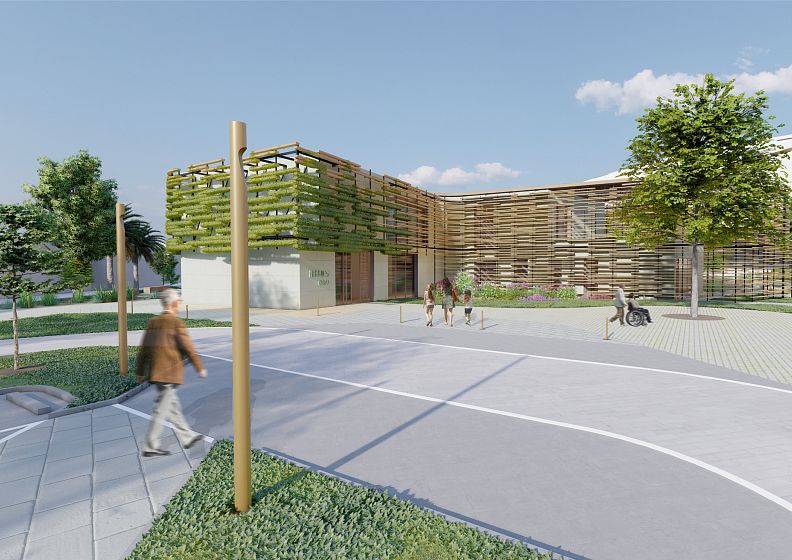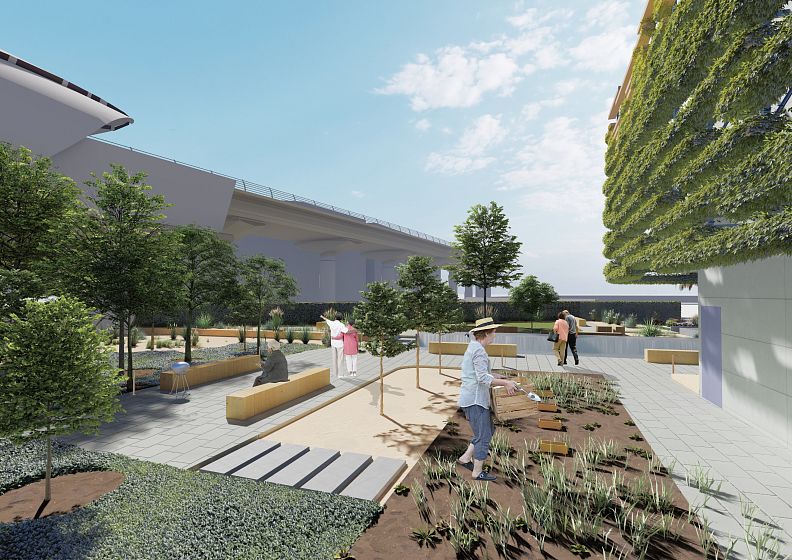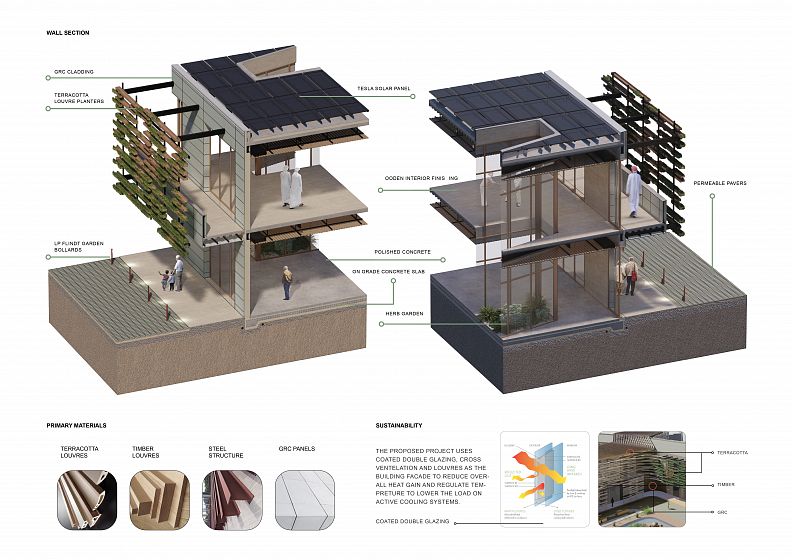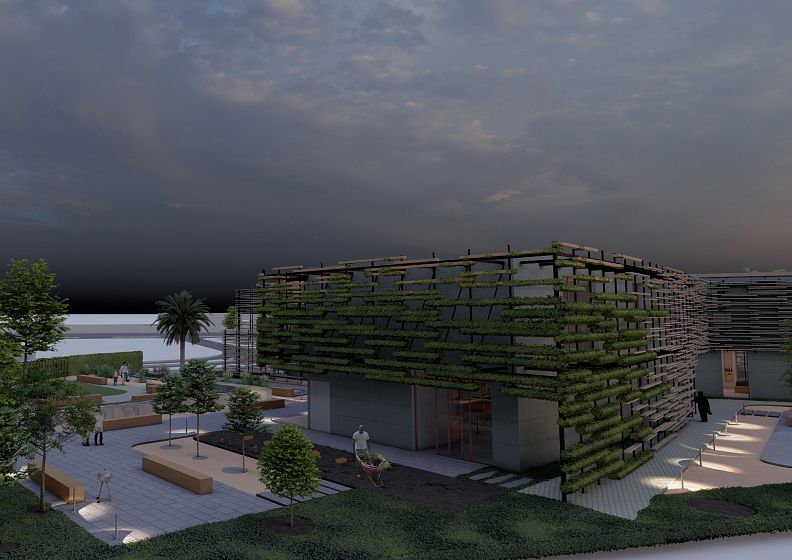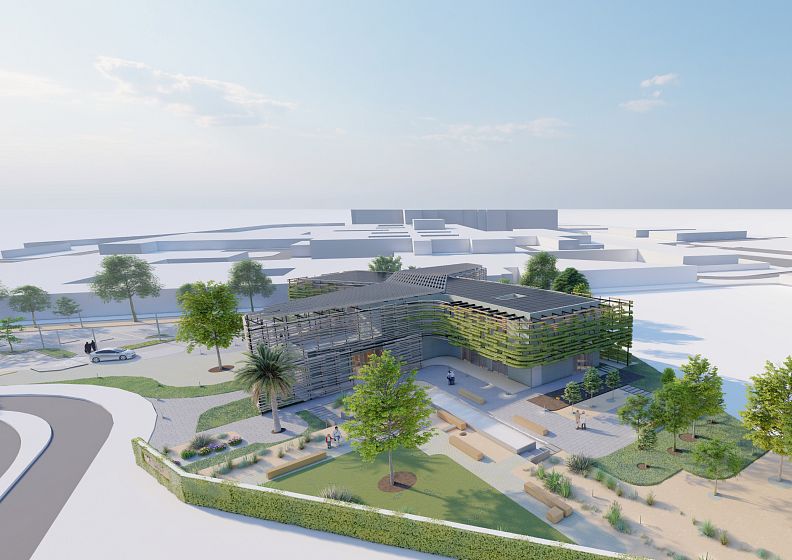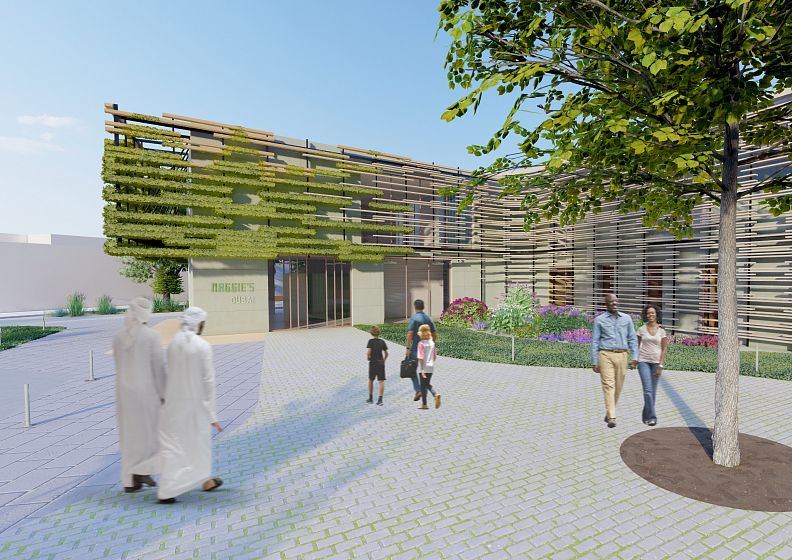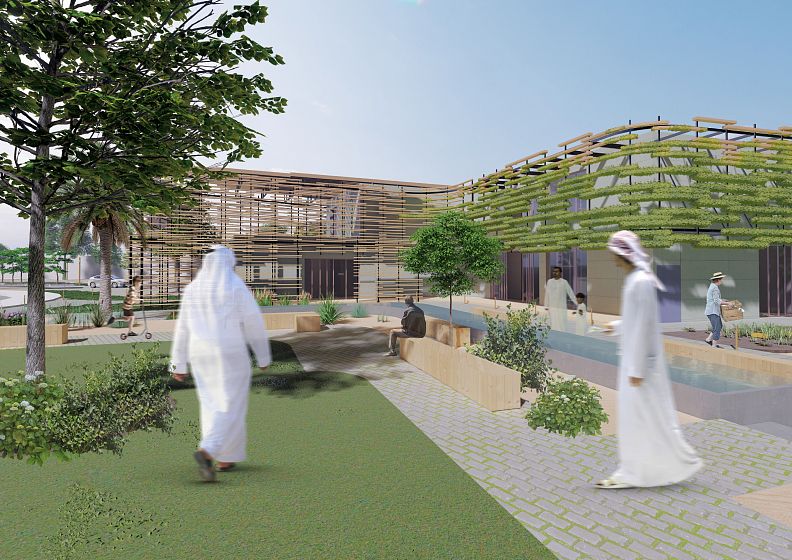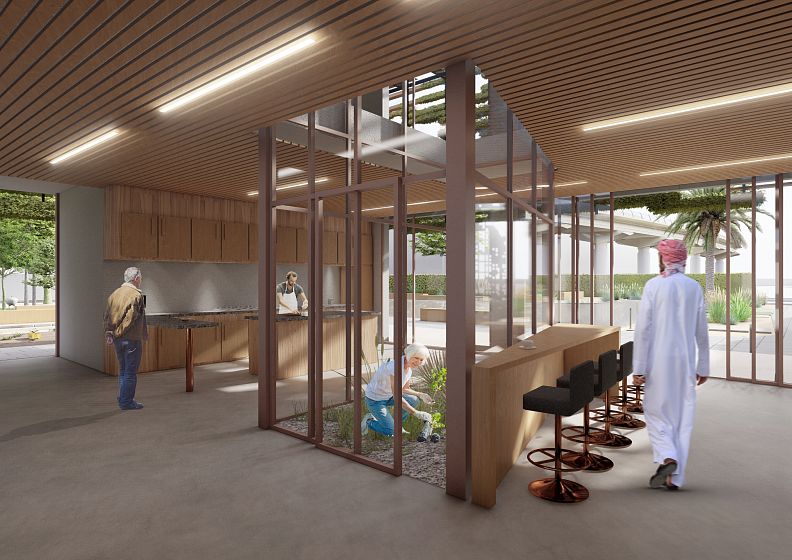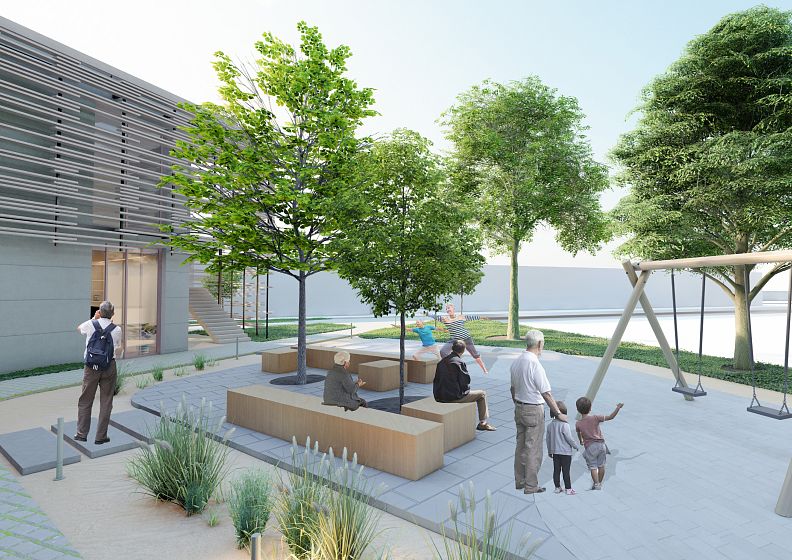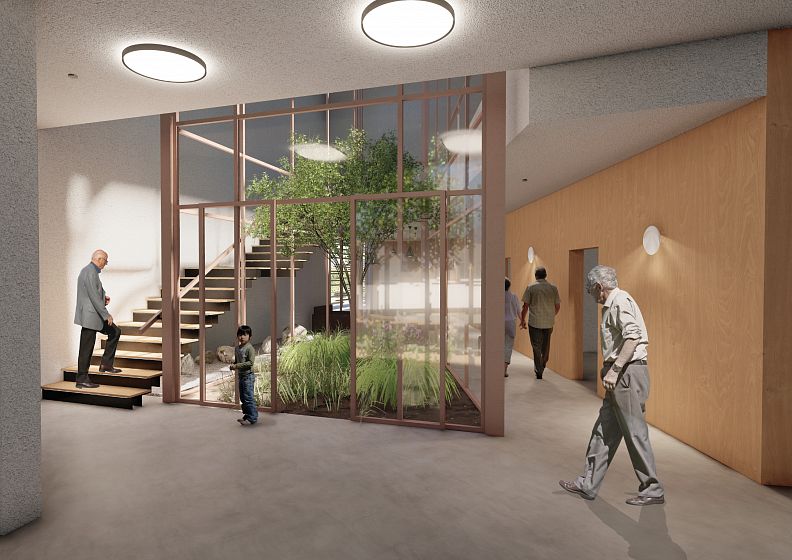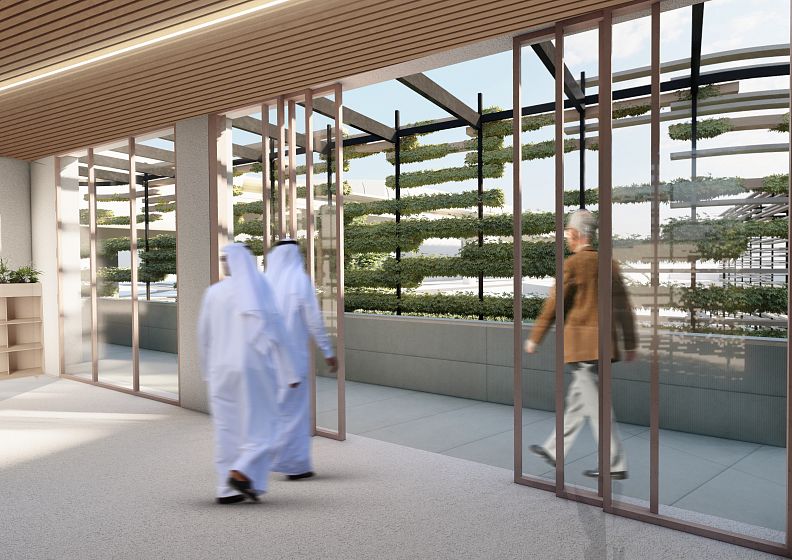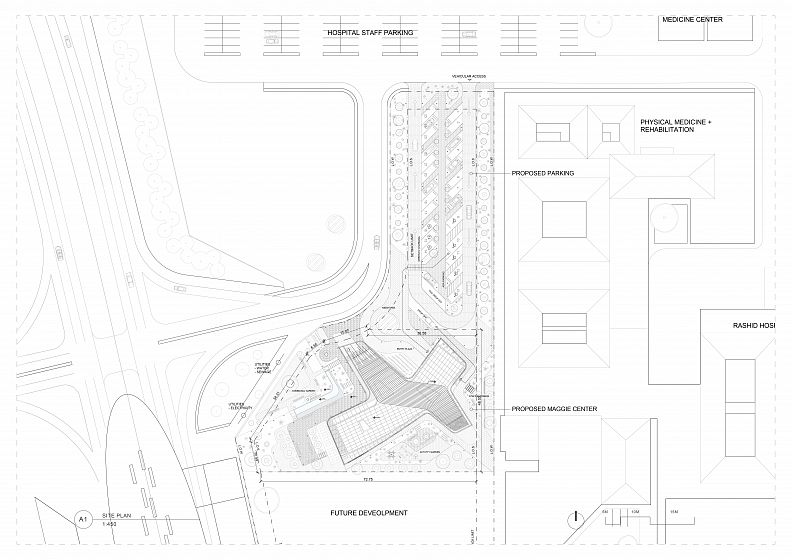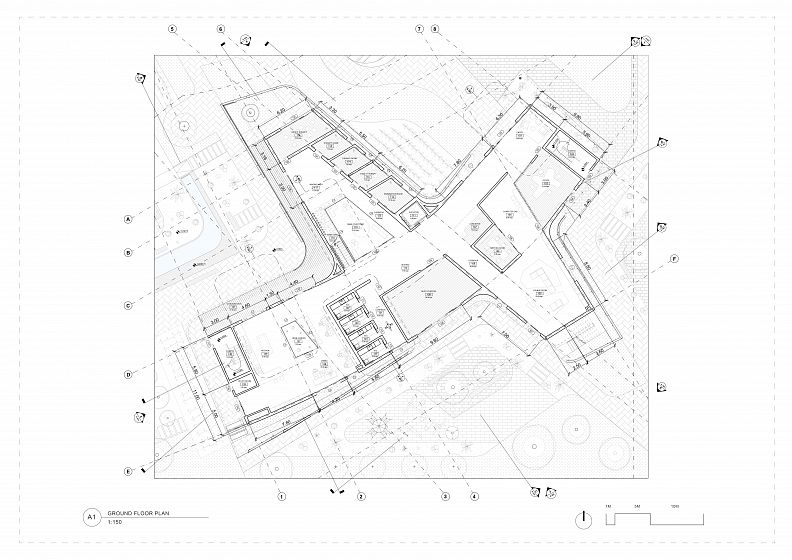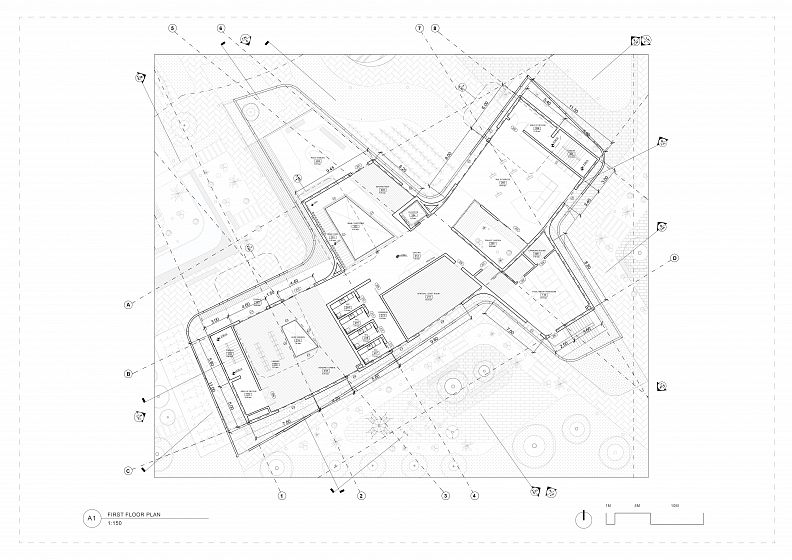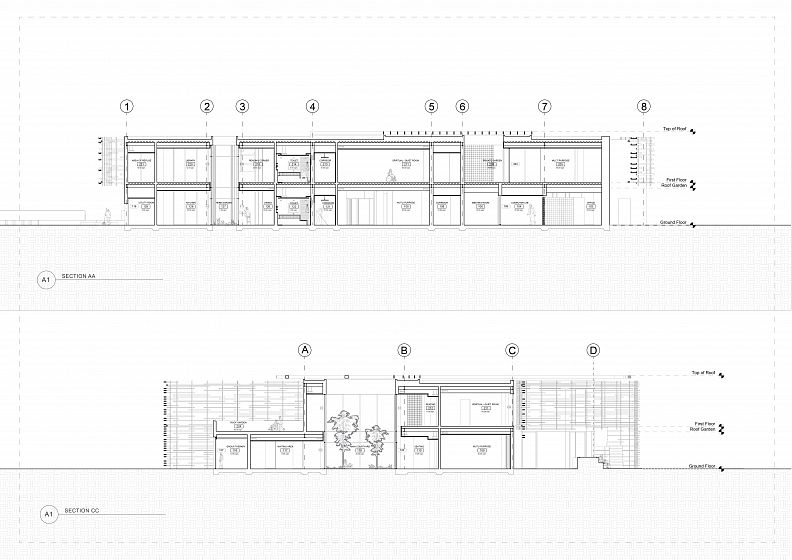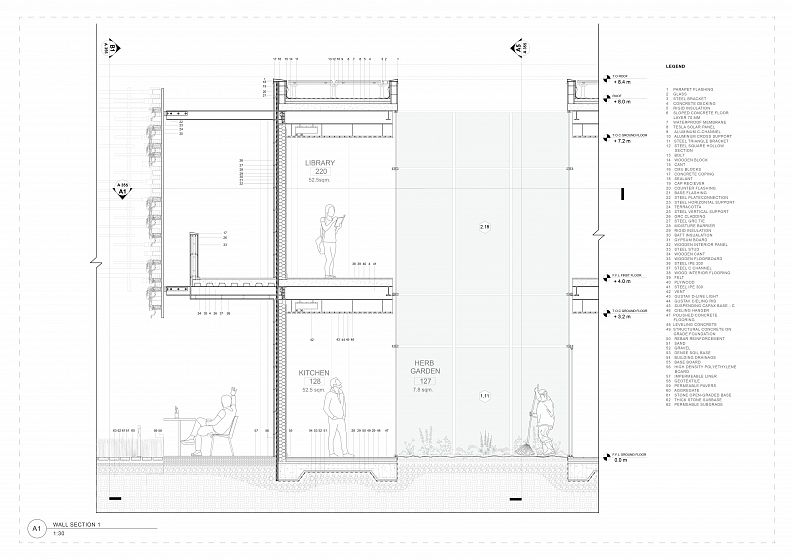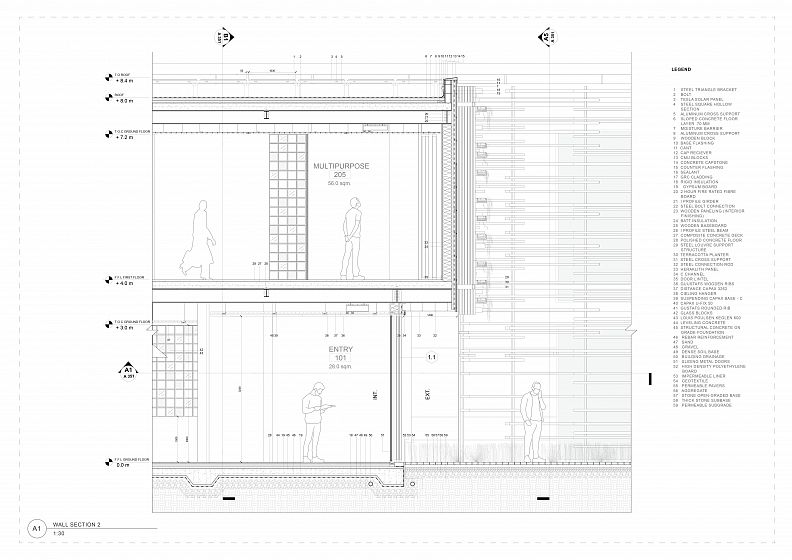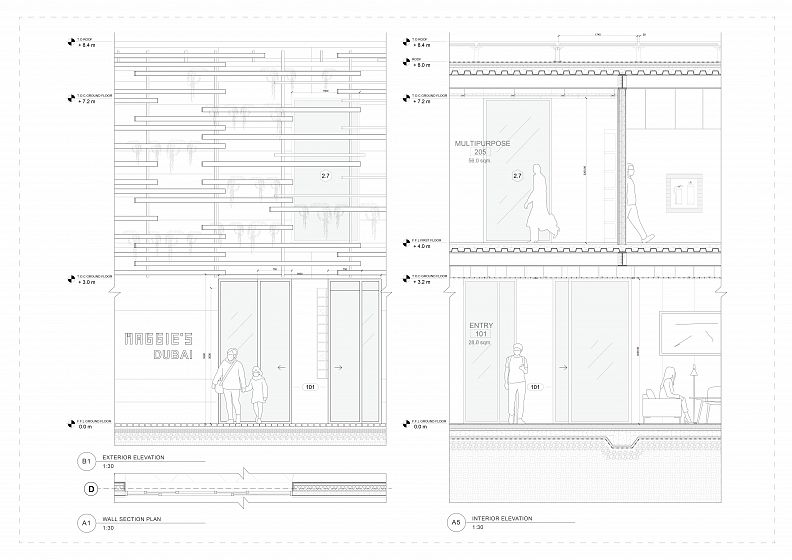Maggie's Dubai - Centre for Cancer Therapy

Project idea
The project, situated in a busy urban area near Dubai Creek and in close proximity to Rashid Hospital, serves as a proposal for a Maggie's Centre in Dubai. Maggie Centres, a legacy of the late landscape designer Margaret Jencks, are meant to provide spaces of healing beyond that of which the typical hospital can offer. This is inspired by the idea that architecture and space have the power to influence one's wellbeing and thus the project centers around various aspects of healing. Maggie Centres are meant to be a place of respite where one is reminded of the joys of life as they contemplate their own mortality upon diagnosis. For that reason, the project takes after the neem tree at the edge of the project’s property line as it is a symbol of life and fertility. Hence the building curves to embody the organic from of nature to create various outdoor pockets which offer different experiences for the user. The landscape pockets point the user outward, in hopes of bringing about that sense of wanting to get back out into the world so as to inspire their healing process.
Project description
The project is a two storey public building meant for cancer patients and those affected as a home away from home. It takes after natural forms as the project's focus is to utilize healing through nature and movement. Formally, the building separates the landscape into pockets: an entry plaza, a communal garden, an activity garden and a private staff garden. Louvres outline the perimeter of the project and peel away to create interstitial spaces such as a group therapy space or roof garden which offers another level of privacy from indoor to outdoor. The louvres increase in density when in front of more private programs and become more sparse in the public areas. Two courtyard and an herb garden can be found on the interior as well. This increased contact with nature is brought about due to research indicating the positive benefits that being in nature has on one's wellbeing. Furthermore, the landscape alongside the creation of interstitial spaces encourages users to move around the project in order to help maintain their physical wellbeing.
Technical information
The project is constructed used a hybrid system of steel and concrete. Due to the building's unusual shape steel was used as the project's main structure system as well as the supporting structure for the horizontal louvre's across the façade. Throughout the project, appropriate material selection and sustainability were considered. Easily acquired and sustainable materials such as terracotta and timber used to form the shading devices across the façade. The roof is covered with solar panels and a tesla power bank is used to lower the project's reliance on the grid and increase its self sufficiency and sustainability.
